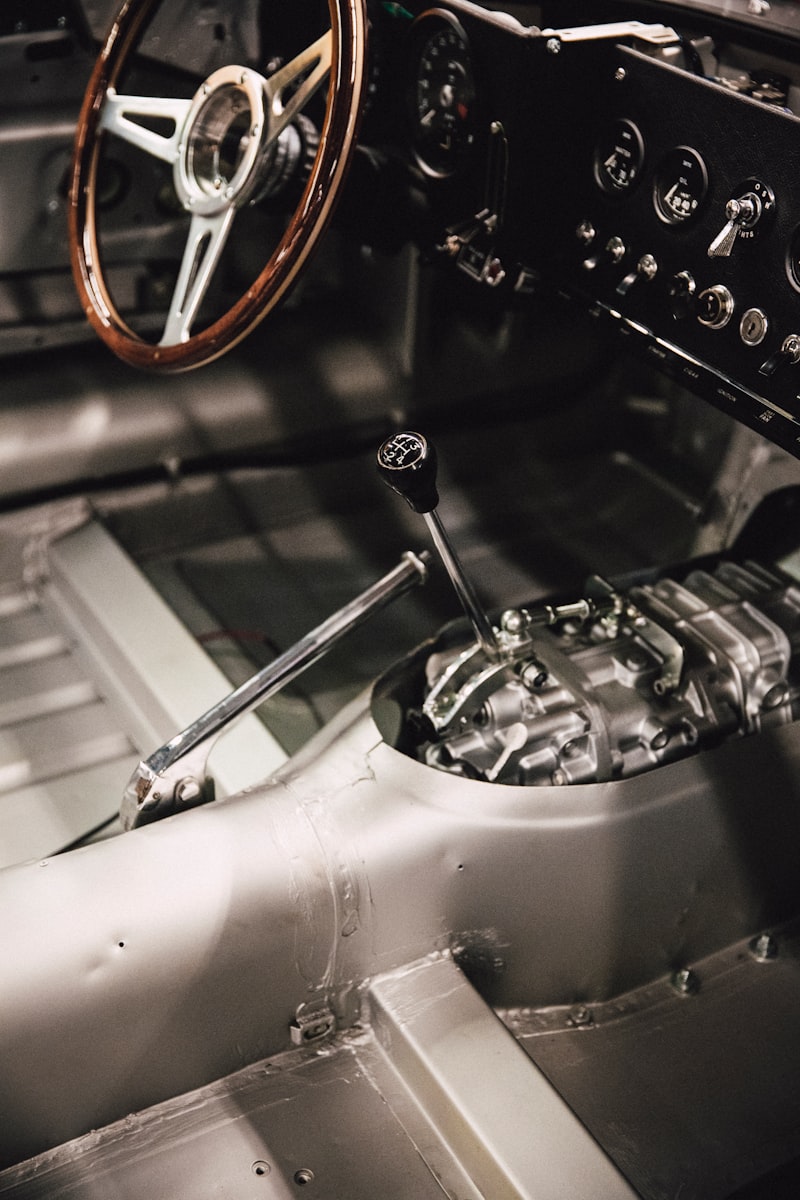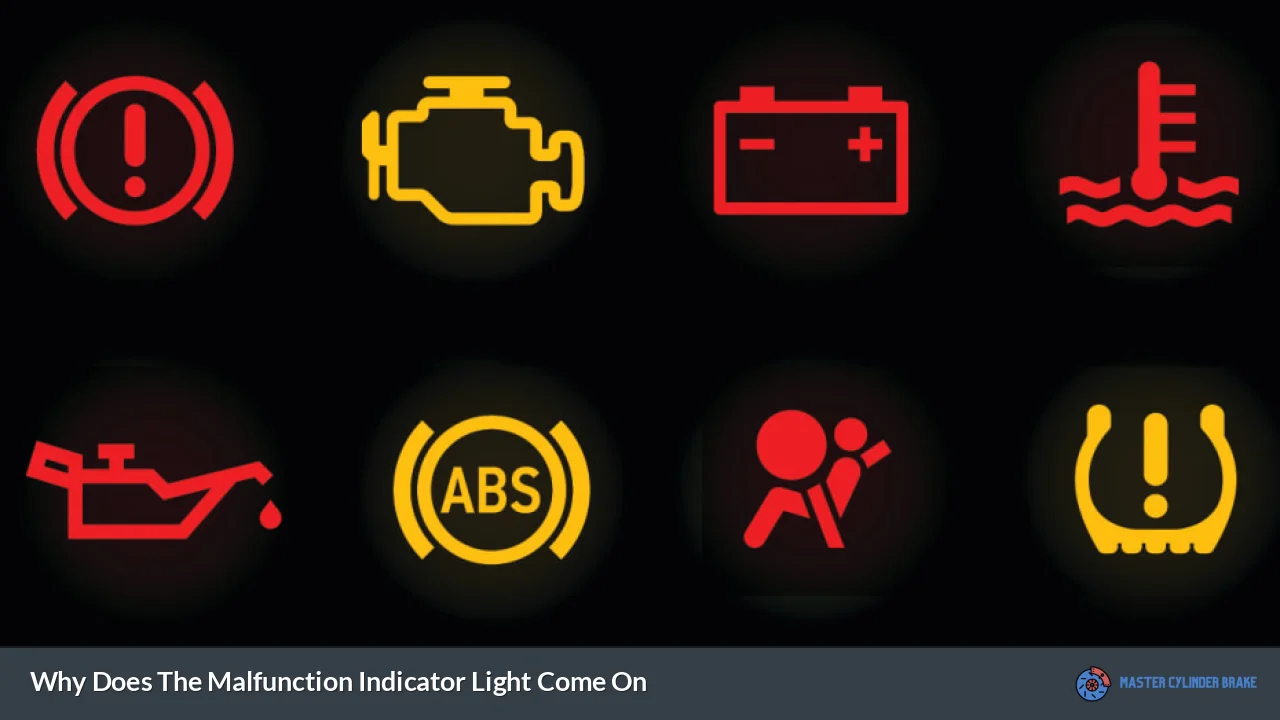Have you ever experienced that sinking feeling when the “Malfunction Indicator Light” suddenly illuminates on your car’s dashboard? We’ve all been there, wondering what could be wrong with our beloved vehicle. In this article, we’ll delve into the reasons why this ominous light comes on and what you can do about it.

Firstly, it’s important to understand that the Malfunction Indicator Light (MIL) is also commonly known as the “Check Engine Light.” This warning light is part of your car’s onboard diagnostics system and is designed to alert you to potential issues with the engine or emission control system.
One common reason for the MIL to come on is a loose or faulty gas cap. Believe it or not, something as simple as a loose gas cap can trigger the indicator light. Fortunately, this is an easy fix—simply ensure that the gas cap is tightened properly, and the light should disappear after a few driving cycles.
Another possible cause is a problem with the oxygen sensor. The oxygen sensor measures the amount of oxygen in the exhaust gases and helps regulate the fuel-air mixture for optimal performance. A malfunctioning oxygen sensor can lead to reduced fuel efficiency and increased emissions. If the sensor is faulty, it may need to be replaced to resolve the issue.
Issues with the catalytic converter can also trigger the MIL. The catalytic converter plays a crucial role in reducing harmful emissions from the exhaust system. A damaged or failing converter can result in decreased engine performance and increased emissions. Replacing a faulty catalytic converter is essential both for the environment and the smooth operation of your vehicle.

These are just a few examples of why the Malfunction Indicator Light may come on. From problems with the spark plugs and ignition coils to issues with the mass airflow sensor or the engine itself, numerous factors can activate this warning light.
Remember, when the Malfunction Indicator Light appears, it’s essential not to ignore it. While some issues may be minor, others can be more serious and require immediate attention from a qualified mechanic. Getting the problem diagnosed and resolved promptly can help prevent further damage to your vehicle and potentially save you from costly repairs down the road.
The Malfunction Indicator Light serves as a valuable tool for alerting us to potential problems with our vehicles. Whether it’s a simple fix like a loose gas cap or a more complex issue with engine components, addressing the underlying cause is crucial to maintaining the performance, efficiency, and longevity of our cars. So, the next time that light comes on, take it seriously and give your car the attention it deserves.
Decoding the Enigma: Unveiling the Mysteries Behind the Malfunction Indicator Light
Have you ever been driving along, enjoying the open road, when suddenly a mysterious light appears on your car’s dashboard? It’s like a secret code that leaves you puzzled and wondering what it means. That enigmatic light is none other than the Malfunction Indicator Light (MIL), also known as the Check Engine Light. In this article, we will unravel the secrets behind this elusive indicator and shed some light on its purpose.
The Malfunction Indicator Light is designed to be a helpful companion, alerting you to potential issues with your vehicle. It acts as a messenger, communicating with you in its own unique language. When the light illuminates, it’s an indication that something is amiss within your vehicle’s systems. But what exactly triggers this intriguing signal?
This light can be triggered by a wide range of factors, including engine misfires, faulty oxygen sensors, loose gas caps, or even more complex issues with the vehicle’s emission control system. It serves as an early warning system, urging you to take action before a minor glitch turns into a major mechanical problem.
When the Malfunction Indicator Light comes on, it’s essential not to panic. Instead, remain calm and take a systematic approach to address the issue. The first step is to determine the severity of the problem. Is the light flashing or constantly lit? A steadily illuminated light typically suggests a less critical issue, while a flashing light indicates a more urgent matter that requires immediate attention.
To decode the enigma behind the Malfunction Indicator Light, it’s best to consult your vehicle’s user manual. This invaluable resource provides specific information about the light’s meaning for your particular make and model. Additionally, modern vehicles often come equipped with onboard diagnostic systems that can retrieve error codes associated with the light. These codes act as clues, aiding mechanics in diagnosing and resolving the underlying problem effectively.

The Malfunction Indicator Light may seem mysterious at first, but it serves a crucial role in keeping your vehicle running smoothly. By paying attention to this enigmatic signal and taking prompt action, you can prevent potential breakdowns, save on costly repairs, and ensure your vehicle remains roadworthy. So, next time that captivating light appears on your dashboard, embrace the challenge of decoding the enigma and unveil the mysteries behind it.
Have you ever been driving along, enjoying the open road, only to be startled by a sudden glow on your dashboard? That little pesky light known as the Malfunction Indicator Light (MIL) can cause quite a dilemma for car owners. What does it mean? What should you do? Don’t fret! In this article, we will unravel the mystery behind this elusive warning symbol.
The MIL, also commonly referred to as the “Check Engine” light, is designed to alert drivers when there’s a potential issue with their vehicle’s engine or emissions system. It acts as an early warning system, indicating that something requires attention under the hood. But what triggers this mysterious light?
There are several reasons why the MIL may illuminate. One common culprit is a loose or damaged gas cap. Believe it or not, something as simple as a loose cap can disrupt the pressure in the fuel system and trigger the light. So before panicking, take a moment to ensure your gas cap is securely fastened.
Another possible cause is a faulty oxygen sensor. This sensor monitors the amount of oxygen in the exhaust gases and helps regulate fuel efficiency. When it malfunctions, the engine’s performance can be affected, leading to the illumination of the MIL.
A worn-out catalytic converter could also be to blame. This vital component reduces harmful emissions, but over time, it can become damaged or clogged. If the MIL lights up, it might be signaling that your catalytic converter needs attention.
Additionally, issues with the mass airflow sensor, spark plugs, or ignition coils can trigger the MIL. These components play crucial roles in the engine’s performance, and any malfunction can disrupt the delicate balance of your vehicle’s systems.
From Warnings to Solutions: Exploring Common Triggers for the Malfunction Indicator Light
Introduction:
Have you ever been driving along, enjoying your journey, when suddenly a small light on your dashboard catches your attention? That’s right—it’s the dreaded Malfunction Indicator Light (MIL). This tiny yet powerful indicator can turn any peaceful drive into a nerve-wracking experience. But fear not! In this article, we will delve into the common triggers behind this elusive warning sign and provide some solutions to put your mind at ease.
Understanding the Malfunction Indicator Light:
The Malfunction Indicator Light, also known as the Check Engine Light, is a signal from your vehicle’s onboard diagnostic system. It’s like a sophisticated detective that monitors your car’s vital systems, constantly searching for any irregularities. When an issue arises, it promptly illuminates the MIL, urging you to take action.
Common Triggers:
Now, let’s explore some of the most common triggers for the Malfunction Indicator Light. One prevalent cause is a loose or faulty gas cap. This seemingly insignificant component plays a critical role in maintaining pressure within the fuel system. If it’s not properly secured, it can trigger the MIL to alert you of potential fuel vapor leaks.
Another trigger is a faulty oxygen sensor. These sensors monitor the amount of oxygen in the exhaust gases, helping your vehicle adjust its fuel-to-air ratio. When an oxygen sensor malfunctions, it can disrupt this delicate balance, resulting in decreased fuel efficiency and increased emissions.
Additionally, a problematic catalytic converter may set off the MIL. This essential emission control device assists in converting harmful gases into less harmful substances. A failing catalytic converter can compromise your vehicle’s environmental performance and trigger the warning light.
Solutions:
So, what can you do when faced with the Malfunction Indicator Light? First and foremost, don’t panic! Start by checking the gas cap—ensure it’s tightly sealed. If it’s loose, simply tighten it and see if the light goes off after a few driving cycles.
For more complex issues like faulty sensors or a failing catalytic converter, it’s crucial to consult with a qualified mechanic. They possess the expertise and diagnostic tools needed to identify the problem accurately. Remember, attending to these issues promptly can prevent further complications and potentially save you money in the long run.
Conclusion:
The Malfunction Indicator Light may seem daunting at first, but armed with knowledge about its common triggers and appropriate solutions, you can navigate this automotive challenge with confidence. Whether it’s a loose gas cap, a malfunctioning oxygen sensor, or a failing catalytic converter, addressing the underlying issue is the key to resolving the MIL mystery. Stay proactive, be vigilant, and keep your vehicle running smoothly on the road ahead.
The Illuminating Truth: Shedding Light on the Malfunction Indicator Light’s Role in Vehicle Maintenance
Are you familiar with that little light on your car’s dashboard that looks like an engine? You may have noticed it before—it’s called the Malfunction Indicator Light (MIL), and it plays a crucial role in vehicle maintenance. But what does it really mean when that light illuminates? Let’s shed some light on this topic and explore the significance of the MIL.
When your car’s MIL comes on, it serves as a signal that something isn’t quite right with your vehicle. It’s like a warning sign, alerting you to potential issues that need attention. Consider it as your car’s way of saying, “Hey, pay attention to me!”
The MIL is often tied to the engine control unit (ECU), which constantly monitors various systems and sensors in your vehicle. It acts as a detective, keeping tabs on everything from the fuel injection system to the exhaust emissions. If the ECU detects any irregularities or malfunctions, it triggers the MIL to illuminate.
Now, here’s where things get interesting. The MIL doesn’t necessarily indicate a major problem every time it lights up. It can be triggered by something as minor as a loose gas cap, or it could signify a more serious issue like a faulty sensor or a malfunctioning catalytic converter. That’s why it’s essential not to ignore the illuminated MIL and address the underlying cause promptly.
To get to the bottom of the problem, it’s best to visit a qualified mechanic or an auto repair shop. They will use specialized diagnostic tools to retrieve the trouble codes stored in your vehicle’s ECU. These codes act as clues, helping the technician pinpoint the specific issue causing the MIL to illuminate.
Remember, the MIL is there for your benefit. By paying attention to it, you can catch potential problems early, preventing further damage and costly repairs down the road. So, next time that little engine-shaped light catches your eye, don’t ignore it. Embrace the illuminating truth it represents and take action to keep your vehicle running smoothly.
The Malfunction Indicator Light (MIL) in your car is like a messenger, informing you of potential issues that require your attention. It’s connected to your vehicle’s engine control unit (ECU) and can be triggered by various malfunctions. Consulting a qualified mechanic is vital to diagnose and address the underlying problem indicated by the illuminated MIL. By heeding this warning, you can ensure timely maintenance and prevent more significant issues from arising.
